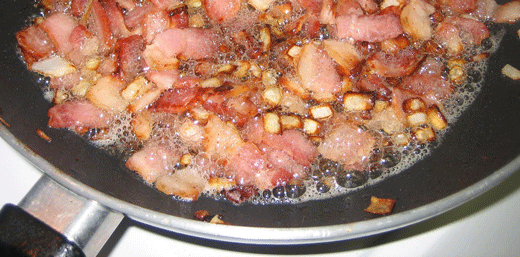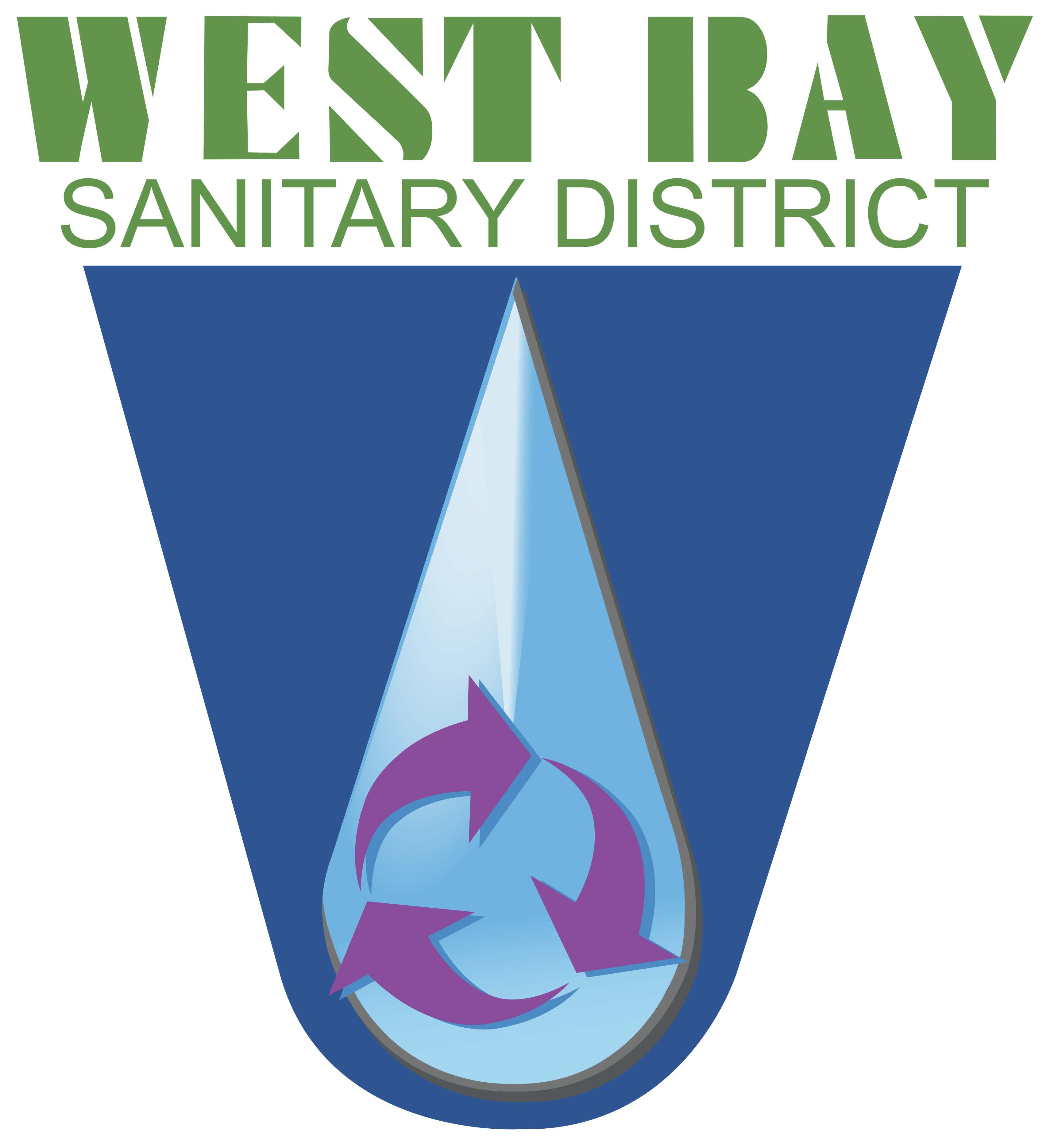
Got Grease? (FOG)
The Districts Source Control Inspectors perform routine inspections of Restaurants and Vehicle Service Facilities with Grease Traps, Interceptors & Oil Water Separators to ensure compliance with the discharge limits of grease and oils, per the District’s Code of General Regulations.
FOG CONTROL PROGRAM (Fats, Oil & Grease)
The District’s Regulatory Compliance Department employs two Source Control Inspectors who perform Facility Inspections of all Commercial and Industrial businesses within the Districts sphere of influence. One of the functions of this department is to ensure that FOG related businesses (Food Preparation Facilities, Vehicle Service Facilities, etc.) are inspected on a regular basis and maintain consistent compliance with the District’s Code of General Regulations, the state and local ordinances.
District personnel performing maintenance activities within the collection system report all observations to the Maintenance Superintendent. Field reports noting FOG related observations are forwarded to the Regulatory Compliance Department for follow up investigation and or mitigation.
The District Source Control Inspectors perform; sampling and flow monitoring, sanitary sewer spill response, respond to odor complaints and ensures facilities are in compliance with the Districts Code of General Regulations. Staff also works in conjunction with outside agencies, i.e. Fire Department and the San Mateo Environmental County Health Department.
All FOG related businesses are inspected on a regular basis; monthly, quarterly and annually. This inspection schedule is based on historical inspection documents. Those facilities that are noted as “Non-Compliant” are re-inspected on a more frequent basis until compliance is obtained. In the event that “Enforcement Action” is required, the District works with the San Mateo County Environmental Health Department and the City/Town Code Enforcement Officers to ensure compliance with regulations in a timely manner.
The Districts “Code of General Regulations” provides the legal frame work for enforcing illicit discharges to the collection system. This code enables the Source Control Department to protect the integrity of the collection system by limiting what may or may not be discharged to the system.
Grease waste must be disposed of properly and professionally. Best management practices recommend these wastes should be rendered and recycled.
Contact the WBSD Regulatory Compliance Department for more information at 650-321-0384.
![]() Learn more at Water Environment Federation (WEF)
Learn more at Water Environment Federation (WEF)
![]() Grease Control Device Variance Guidelines
Grease Control Device Variance Guidelines
-
1. What causes a sanitary sewer to backup?
Most sewer backups happen because the line is plugged with an obstruction. However, backups can be caused by several factors including the condition of the sanitary sewer system itself, natural phenomena such as earth movement, heavy rainfall, and the incorrect usage of the system by the public.
Some common backup causes are:
• Solids / debris – Typical solids that buildup in the pipe and cause backups are dirt, hair, bones, feminine products, non-flushable wipes, paper towels, kitty litter, diapers, broken dishware, garbage, concrete, and debris.
• Fat/Oil/Grease (FOG) – When FOG is discharged into a sewer system they will solidify and, after a while, can build up and plug drain lines in your home, building, or complex. Solids and Debris can also plug the sewer lines owned by the District, thus increasing the maintenance cost to the District. Plugged sewers can also cause flooding of nearby private homes and businesses.
• Tree Root infiltration – Tree roots can cause backups. Roots can infiltrate the pipe system and block the wastewater flow.
• Water inflow/infiltration – Rainwater entering the public sewer line can cause system problems and spills.
• Illegal connections-roof gutters and storm water runoff discharged to the sewer system by pumps or gravity take up system capacity which was designed for the transport of wastewater only.
• The discharging of swimming pool water to the sanitary sewer in excess of required flow rates to prevent spill conditions and without a permit.
• Illegal dumping-accessing the system without permit or permission to dispose of waste not intended for the sanitary sewer system. This type of activity is against the law. If you witness this type of offense, obtain a description of the perpetrator and vehicle license and call the District at 650-321-0384.
• Structural defects in pipes and manholes – Significant sags, bellies in the line, cracks, holes, protruding laterals, misaligned pipe, offset and open joints and collapsing pipe material are all possible causes of backups.
-
2. What kinds of problems do fat, oil and grease (FOG) cause?
Sewer capacity constraints are frequently caused by the improper disposal of materials, including fats, oils, and greases being introduced into the sewer system by District residents and businesses. After they enter the sewer system they will solidify and, after a while, can build up, plug drain lines in your home, building, or complex. FOG blockages can create sanitary sewer spills inside your home or business or spill onto streets entering the storm drainage basins that lead to creeks and streams which flow to the San Francisco Bay.
-
3. How big is the grease problem? What is the district doing to mitigate FOG?
Less than 10% percent of all sanitary sewer system problems spills are caused by accumulations of fats, oils and greases discharged to it from the preparation and serving of food. This is mostly due to proactive Fats, Oil & Grease program the District employs to work with restaurants and businesses to keep grease traps clean and encourage the recycling of grease and oils rather than disposing of them in the sewer system.
-
4. Where does the fat, oil and grease come from?
Fats, oil and grease can come from many sources. In the food industry, ‘grease’ often refers to fats and oils derived from animal and vegetable sources. These include meats, nuts, cereals, beans and waxes/paraffin. You can help reduce fats, oils and grease from accumulating in the pipelines by recycling or disposing of your grease rather than pouring it down the drain.
-
5. What are Grease Removal Devices (GRD’s)?
Grease removal devices are indoor-outdoor Gravity Grease Interceptors (GGIs) or Hydro-mechanical Grease Interceptor (HGIs) designed, constructed and intended to remove, hold, trap or otherwise prevent the passage of Fats, Oils and Grease (FOG) from entering the sanitary sewer system.
-
6. Do I need a Grease Removal Device?
Any Food Service Establishment (FSE) that introduces FOG into the sewer system in quantities large enough to cause obstructions in flow, line blockages or hinder sewage treatment is required to install a grease trap or interceptor.
-
7. Do I need a grease interceptor or trap, though I do not fry or cook with grease?
Yes. The reason you need a grease trap or grease interceptor is because of the clean up, not the cooking. When you wash your cooking equipment, you are washing fats, oils, and grease (not to mention solids) into the building drainage system. It’s the fats, oils, grease and solids that damage sewer systems. Section 602 Grease, Oil and Sand Interceptors
-
8. Can you recommend a maintenance schedule for Grease Interceptors?
It is recommended that, all grease removal devices must be maintained regularly such that the depth of floating FOG and settled solids accumulation do not exceed 25% of the of the GRD’s volume, at any time. Thereby the working depth of each device stays more than 75% for effective FOG separation. All grease removal devices shall be maintained to ensure compliance with the District’s discharge limits for oil and grease in accordance with WBSD Code Section 602.01 Grease, Oil and Sand Interceptors. As per WBSD code Section 602.03 Owner to Operate and Maintain; All grease, oil and sand interceptors, where required shall be properly operated and maintained by the owner, at the owners expense, at all times
-
9. How do I know that my Grease Removal Device is adequately sized?
The Uniform Plumbing Code requires that no grease trap have a capacity less than 20 gallons per minute (gpm) or more than 55 gpm. The size of the trap depends upon the number of fixtures connected to it. If a grease trap or interceptor is not maintained regularly, it will not provide the necessary grease removal.
-
10. Who cleans the grease traps and interceptors?
The small under-the-sink or under-the-counter traps that are usually located inside the building may be cleaned by the establishment itself. It is recommended that if cleaning is performed by kitchen staff, solids and FOG should be dewatered and discarded in the trash. The large outside interceptors must be cleaned by a licensed grease hauler. This is due to the volume of waste contained inside the trap and the proper disposal of this waste. The interceptors are roughly the size of a residential septic tank and they are confined spaces. No one is allowed to enter confined spaces without training or certification
-
11. Who is a ‘Licensed Grease Hauler’?
According to California Food and Agricultural Code Sections 19310 and 19311, a ‘Licensed Grease Hauler’ is a person who is registered with the department of Food and Agriculture as a transporter of inedible kitchen grease and who is in possession of a valid registration certificate from the Department of Food and Agriculture. Licensed Grease Haulers are eligible to operate vehicles for the purpose of collecting inedible kitchen grease that includes used cooking/fryer oil. They are also eligible to clean the grease traps and grease interceptors.
-
12. What should I do with yellow grease (used cooking/fryer oil)?
Do not pour yellow grease down the drain or in the trash. It is best to compost small amounts of cooking/fryer oil (in a paper milk or ice cream carton). Large amounts of cooking/fryer oil should be collected in a separate recycling bin or container setup either inside or outside the building and hauled through a licensed grease hauler. Large amounts of used oil, up to 10 gallons, can also be transported by the food facilities in their own vehicles to Allied Waste Industries located at 225 Shoreway Road, San Carlos, for additional information please call 650-637-1411.
-
13. What should I do with brown grease (grease scrapped from traps and cook-wares)?
It is best to compost small amounts of grease scrapped from traps and cook-wares (in a paper milk or ice cream carton).The grease from traps and cook-wares should not go into the used oil recycle storage bin. Brown grease should not be mixed with yellow grease, unless the yellow grease hauler can recycle the entire contents when they are mixed.
-
14. How should food service establishments (FSEs) stay compliant with the District Codes?
The food service establishment should install and maintain appropriate grease removal devices, as per Uniform Plumbing Code, WBSD Codes and follow all ‘Best Management Practices’ required by the District.







